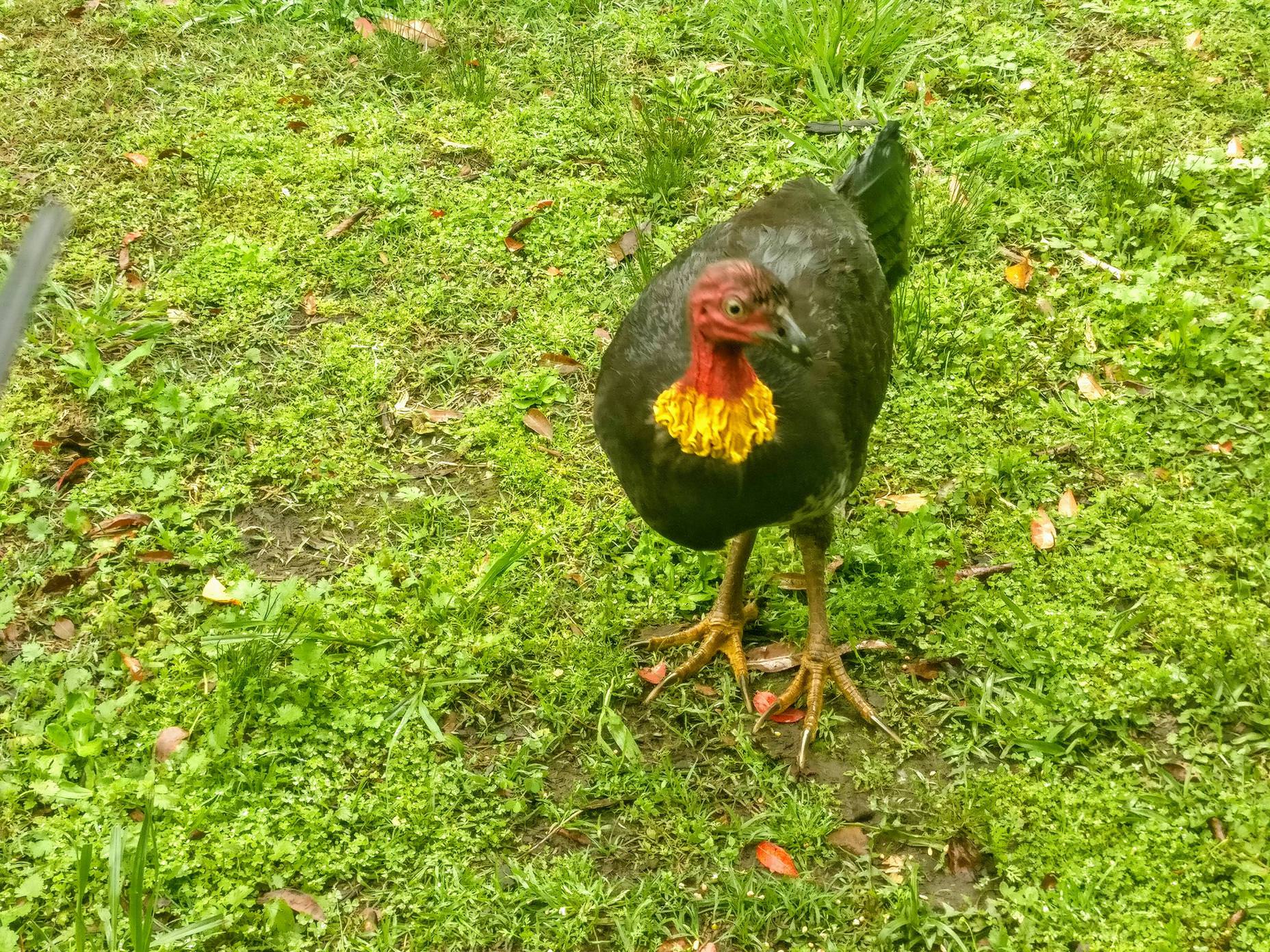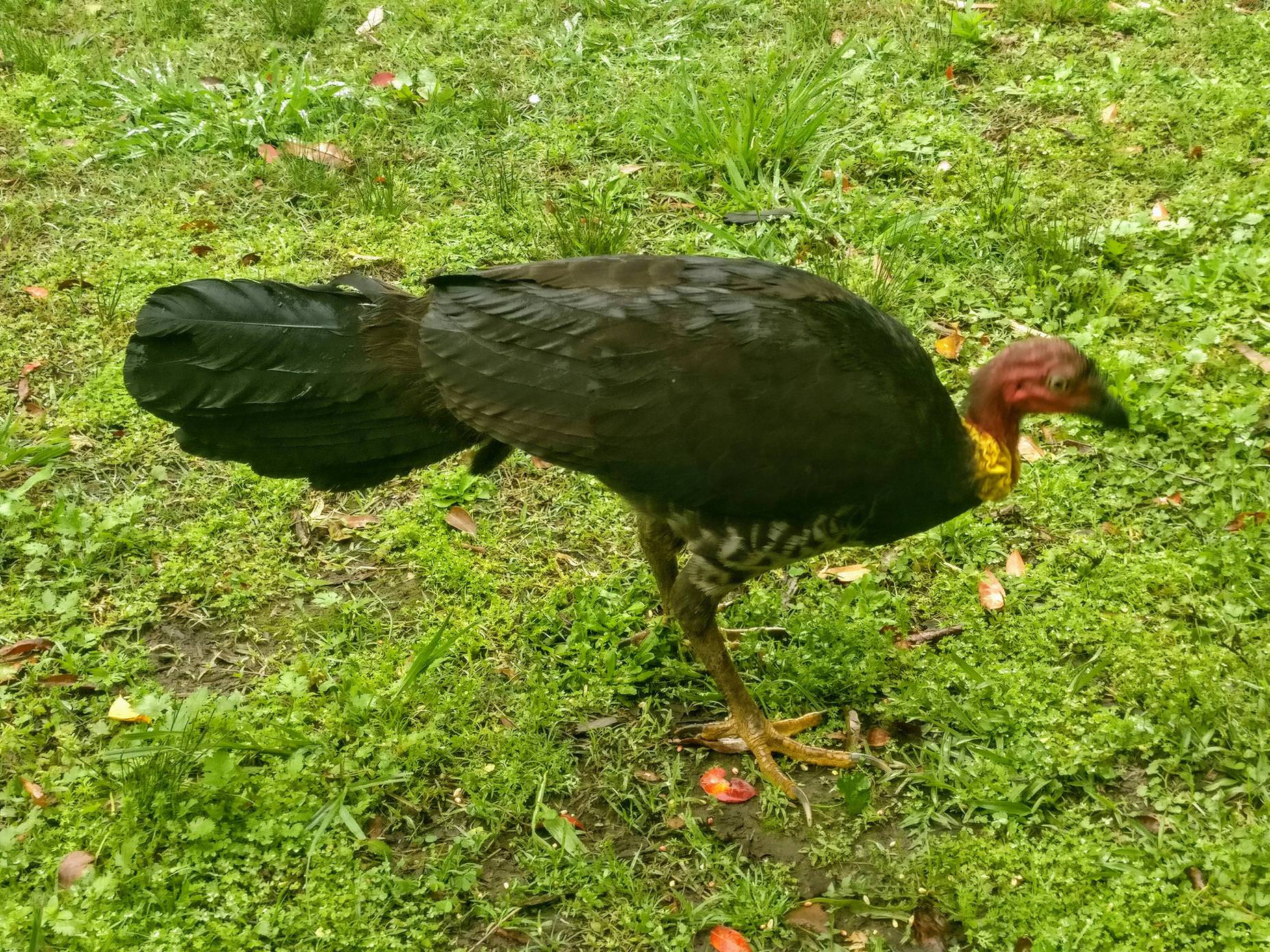I have 2 broody's on some 26 eggs in their own separate aviary, which apparently isn't quite as protected from the elements as the main open-air coop.
It has been raining pretty heavily here for the past week or so. The food I had out for the broody's got drenched, so I put it out of their aviary and sorted out another food source and hadn't thought much of it again (understandably, I'm trying to spend as little time as possible out in the rain). The food has been out of the coop/run and in the open for at least a couple of days.
Anyway, over those past couple of days, some of our natives have come to visit, have found the food and they seem to be hanging around. They're a flock of four great Australian Brush Turkeys (aka Scrub Turkey, Bush Turkey). Three of the four flee when I approach, the other is quite a cheeky male and has been running to me when I throw scratch for the chooks.
I thought I'd share some pictures and information of these fascinating creatures, as most of the BYC users are based in the United States and have probably never seen or heard of them.



The male Australia Brush Turkey builds a mound of about 2m wide and 1m tall, and uses the mound to attract female mates. They breed with up to 5 females, and the mounds can hold up to 60 eggs! Once the female lays her clutch, she leaves the mound to never return. The male tends to the mound, checking moisture and temperature levels and making adjustments where required.
The incubation process takes approximately 50 days, and gender ratios depend on temperature and humidity levels of the climate in which they're laid. Once the Brush Turkey chick hatches, it's on its own to fend for itself and survive. They immediately leave the nest and run for cover.
The Brush Turkey isn't actually a Turkey! It is part of the Megapodiidae family, which is predominantly found in Australia and the West Pacific.
It has been raining pretty heavily here for the past week or so. The food I had out for the broody's got drenched, so I put it out of their aviary and sorted out another food source and hadn't thought much of it again (understandably, I'm trying to spend as little time as possible out in the rain). The food has been out of the coop/run and in the open for at least a couple of days.
Anyway, over those past couple of days, some of our natives have come to visit, have found the food and they seem to be hanging around. They're a flock of four great Australian Brush Turkeys (aka Scrub Turkey, Bush Turkey). Three of the four flee when I approach, the other is quite a cheeky male and has been running to me when I throw scratch for the chooks.
I thought I'd share some pictures and information of these fascinating creatures, as most of the BYC users are based in the United States and have probably never seen or heard of them.

"Hey Mrs Clause, who the heck is that fella, and what's that yellow ring 'round his neck?"
"I dunno Baby It's Cold Outside, but I think he's quite handsome!"
"I dunno Baby It's Cold Outside, but I think he's quite handsome!"

The male Brush Turkey has a distinctive bright yellow ring around his neck. This one is a juvenile, likely in his first year of breeding, and his yellow ring/wattle hasn't quite dropped yet. Those toenails/claws are long and strong and used to scratch and forage, and to build the signature egg mound.

Side on view of the same male. He was the only one game enough to hang around when I went outside.
The male Australia Brush Turkey builds a mound of about 2m wide and 1m tall, and uses the mound to attract female mates. They breed with up to 5 females, and the mounds can hold up to 60 eggs! Once the female lays her clutch, she leaves the mound to never return. The male tends to the mound, checking moisture and temperature levels and making adjustments where required.
The incubation process takes approximately 50 days, and gender ratios depend on temperature and humidity levels of the climate in which they're laid. Once the Brush Turkey chick hatches, it's on its own to fend for itself and survive. They immediately leave the nest and run for cover.
The Brush Turkey isn't actually a Turkey! It is part of the Megapodiidae family, which is predominantly found in Australia and the West Pacific.





 )
)
